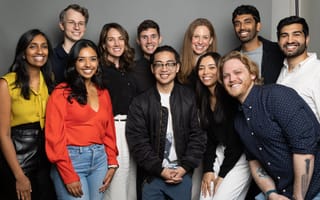In a crowded marketplace, companies sometimes feel they must shout to be heard. Others rise above the noise with action — quietly working to change the lives of deserving individuals.
One such organization is firsthand Health Inc., a company that leads with its mission: improving access, care and quality of life for individuals living with serious mental illness. At firsthand, service design is the beating heart of the team’s quest for meaningful impact.
Product Manager Shohini Gupta, who finds herself at the intersection of business, engineering and user experience, attests to how deep the company’s mission runs. Gupta is at the helm of developing internal software that streamlines operations for non-clinical teams, with a long-term vision of enhancing how they engage with and impact the lives of those they serve.
“Our vision is that business priorities and individual needs can be surfaced to care teams in a really smooth user experience that allows care teams to only focus on individual care,” Gupta explained. “Healthcare workflow software should be as non-intrusive as using an iPhone.”
“Healthcare workflow software should be as non-intrusive as using an iPhone.”
The company’s goal of creating tech solutions that meet the needs of the care teams they serve calls for robust feedback structures between teams.
“We continually work on structures in which care teams feel comfortable giving feedback to Support and vice versa — it’s essential because the Support team is not directly taking care of individuals,” said Gupta, noting that this feedback loop enables firsthand’s cross-functional teams to “build the right things” and illustrates how, throughout the organization, the mission is more than just words on a page.
What’s your role at firsthand?
I am a product manager responsible for building our internal software for our non-clinical teams to help them get their most important work done. Our platform, helpinghand, removes the operational questions of what a team should do every day. For example, our non-clinical care teams don’t have to focus on which individuals they need to schedule for a visit, or who they haven’t talked to in more than 30 days.
My process looks something like this: I first start with our business operations leads to understand the most important goals and workflows they want to enable across our care teams. Then I do deep user research to understand how those new goals will fit into the care team’s existing workflows. This likely comes via prompting reminders, forms or relevant information for the individual or team in the software that the teams are using to drive their work. Then, I translate that into specific requirements so that the software engineering team can actually make those ideas a reality.
What role do your team members play in building your company mission and culture?
We encode the best practices of the community teams in operational tools. So, things that our care team does well, we build into code. For example, in supporting individuals in our communities, teams talk to many other people involved in their lives.
In our previous tooling, we had no way of storing other contact information. When we built our own software platform, we made it clear that you can add contact information and record when you talk to others around the individual. Our software team reinforces the best practices and showcases them, so new teams don't even have to think about aligning to our mission and values — it's already in the software platform.

How do you build team culture? What does that look like at firsthand?
Every week as a team, when we review the previous week and plan for the next, I spend time celebrating our achievements and every engineer. I contribute to building our team culture by recognizing the people I work with.
“I build a team culture by recognizing the people I work with.”
I also consistently ask for feedback and create spaces where people feel comfortable providing honest feedback. One example is our #helpinghand-feedback-questions Slack channel, where we get an average of five posts a day from helpinghand users giving feedback on features they'd like to see or data points they want. We've set a standard for what internal customer service can look like.
How do you help your team grow their careers?
Some of our tech team members joined firsthand without deep healthcare expertise. I use my one-on-one time to help them understand our business reasons. We have a complex business model, and I believe engineers should be able to make decisions without product managers. Every time we’ve been able to do that at firsthand, the engineers have built incredible things I could never have imagined.
What is the employee value proposition for those thinking about joining your company?
The employee value proposition for a support team member like myself is twofold. One, we have an experienced leadership team. Our leadership team is focused on ensuring we can maintain our mission of improving access, care, outcomes and quality of life for individuals living with serious mental illness, while also being financially sustainable.
Two, we have an incredible mission and I am able to see that close up. I visit our community teams once a month and spend time on ride-alongs with firsthand Guides — peer supporters, tasked with building relationships with the individuals we serve — to meet the individuals they support. Having a tight loop between support teams and these individuals is encouraged, and rare at companies of our stage. Firsthand also compensates fairly and the benefits are great: generous PTO and wellness leave, unlimited free talk therapy, a personal development stipend and more. Importantly, the benefits are equally applied across support and care teams, which is a concrete reflection of our values.
The impact of firsthand in my career is clear. Firsthand is a leading healthcare company for its age — it was founded in 2021 —and staged a well-respected leadership team in the digital health space. There are people in the firsthand support team who will be influential in the digital health space going forward. I believe there are people here who I will follow for the rest of my career.






